A domain is like an address where people can find you online. This address is often the first thing that users use and see of you on the Internet. That’s why choosing the right domain is essential. In this article, I will give you an overview of what domain levels and types there are and where you need to pay attention.
Most domains consist of three levels:
- Top-level domain (TLD) or domain extension
- Second-level domain (SLD), usually the domain name
- Third-level domain or subdomain
The top-level domains (TLDs) are additionally subdivided into different types:
- Country Code TLDs (ccTLD)
- Generic TLDs (gTLD)
- Unsponsored TLDs (uTLD)
- Sponsored TLDs (sTLD)
- New TLDs (nTLD)
Overview of domain levels
Domain levels are the different sections of a domain, each separated by a dot. In general, the levels of a domain are counted starting from the end.
If you take the domain www.inwx.de, for example, you can see directly that this domain has three levels. In the last place, you will find .DE – this is the top-level domain (TLD). This is followed by the individual name INWX – this is the second-level domain (SLD). And in this case, in the first place you can find the third-level domain – www.
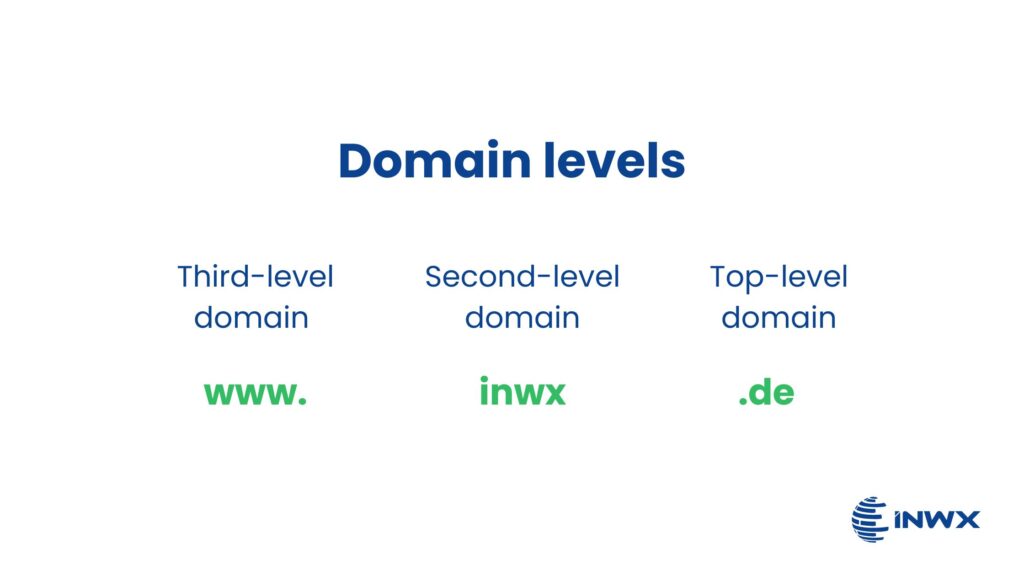
Generally, a domain can consist of a number of domain levels, which are incremented according to the same pattern. The third-level domain is followed by the fourth-level domain and so on.
However, it is recommended to keep domains as simple and short as possible, as this makes them easier to remember and more convenient to use.
Domain levels are administered on the Internet by various organizations that have previously been approved by the Internet Corporation for Assigned Names and Numbers (ICANN). Registries are responsible for managing the top-level domains (e.g. VeriSign for .COM, DENIC for .DE).
And the management of domain names under the individual TLDs is handled by the registrars (e.g. INWX). With the latter, each person can purchase their desired domain from domain name and domain extension. Subdomains can be created at will after purchase.
Top-level domains
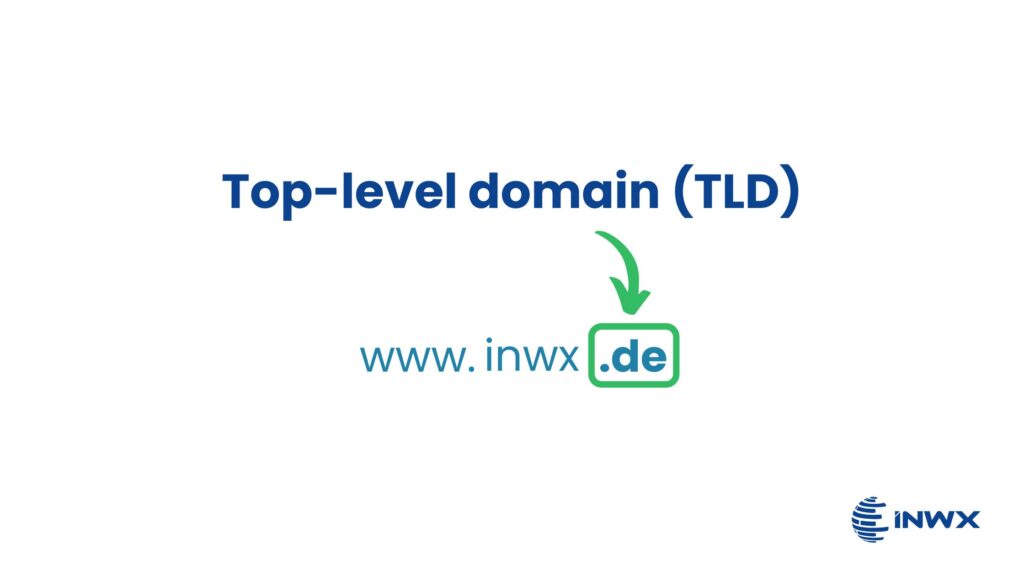
The top-level domain (TLD) is, as mentioned, the last position of a domain. It is therefore also known as the domain extension.
Unlike the domain name (the SLD), the TLDs are not customizable and/or freely selectable. Instead, there is a certain number of existing TLDs from which you can choose. However, new ones are always being released by ICANN.
In the following, I will give you a short overview of the existing TLDs.
The different types of top-level domains
Domain extensions can be divided into several types, which differ in their field of application as well as other factors.
Country Code TLDs
Country Code Top-Level Domains (ccTLDs) are reserved for countries and identify the nationality of a domain. These include, for example, the following:
- Germany: .DE
- Austria: .AT
- France: .FR
- China: .CN
Each country can decide for itself which guidelines should apply to the registration of its country code top-level domain (ccTLD).
Generic TLDs
Generic Top-Level Domains (gTLDs) are reserved for general purposes and can be registered by any person, company or organization. Here, a distinction is made between further domain types:
| Types of generic TLDs | |
|---|---|
unsponsored TLDs (uTLD) | .COM |
| .ORG | |
| .NET | |
sponsored TLDs (sTLD) | .EDU |
| .MUSEUM | |
| .TRAVEL | |
new TLDs (nTLD) | .BLOG |
| .SHOP | |
| .BERLIN |
Generally, generic TLDs are distinguished between non-sponsored and sponsored TLDs. The non-sponsored TLDs are directly subordinate to ICANN and the sponsored ones are administered by so-called registries, which are independent of ICANN.
Originally, these first domains were intended exclusively for certain groups – for example, the .COM domain was only for companies and the .ORG only for organizations. Today, however, most of them can be registered by any person.
The so-called new TLDs are also sponsored domains, but they have only been introduced since 2013. With these, a large variety of new and above all very topic-specific endings have been added, from which you can now also choose and directly convey to your users what they can expect on your website.
Second-Level-Domains
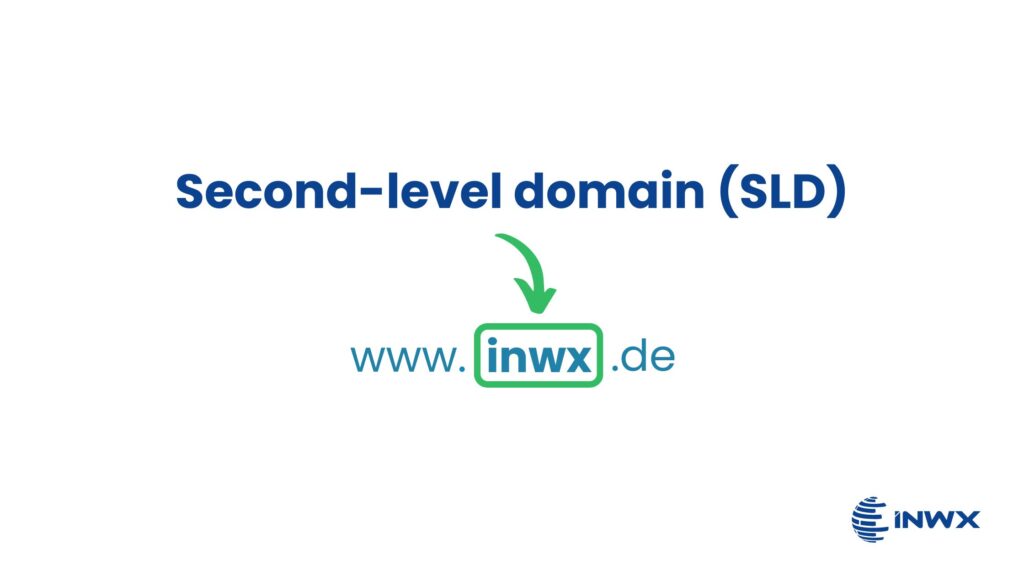
The second-level domain (SLD) comes directly before the top-level domain. Mostly, it is the name of the website itself – i.e. the domain name.
In our example, this is our company name “INWX”. This part of the domain is completely individual and freely selectable. Again, it makes sense to choose words that describe the content of the website. For example, the second- and top-level domain can be used to directly represent what the website contains. An example would be the domain shoes.store for a shoe store.
However, the second-level domain (SLD) does not necessarily have to be the website name. A domain can also end with two top-level domains, such as .CO.UK. In this case, .CO is the second-level domain and the individual name is the third-level domain.
Third-level domains
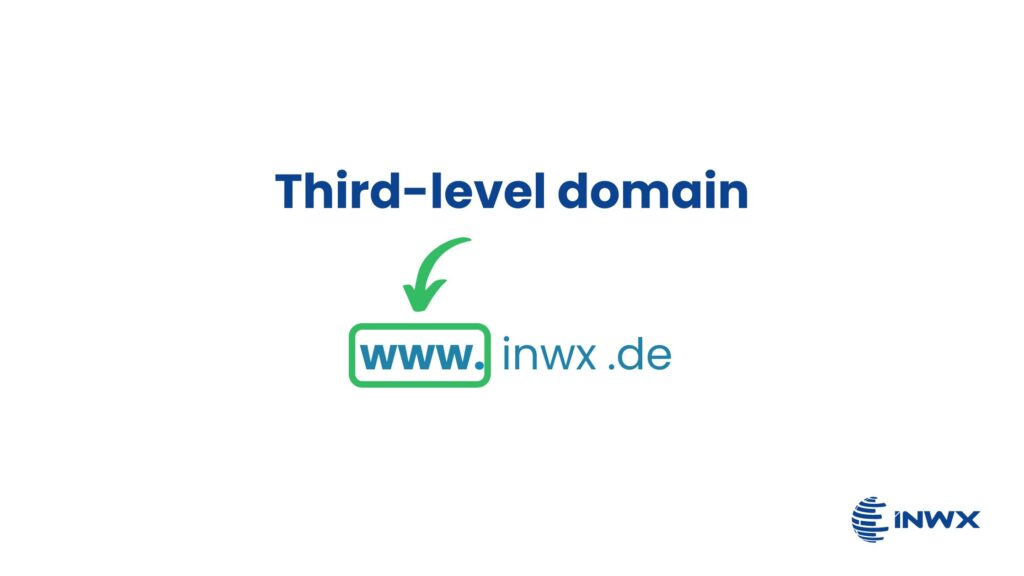
The third-level domain, also called subdomain, is the next level. This level is usually used for specific purposes and can give the user a hint about the area of a website. An example with a descriptive subdomain is blog.inwx.es.
In this way, the structure of the website can be displayed more clearly and different subject areas can be separated or even different (language) versions for several countries can be created and visually subdivided. Often, however, the “standard” subdomain www (World Wide Web) is simply used.
Fourth-level domains and other levels
The fourth-level domain follows the third-level domain. Again, this further subdomain of the domain can be used to demarcate a specific area of the website or a department.
It should be noted that theoretically there can be very many domain levels. In the enumeration, one always starts at the rearmost position. Each level is separated from the next level by a dot.
However, I would recommend you to limit the number of levels to three when choosing your own domain so that your users can easily remember them.
You still have questions?
If you have any questions, just send us an email to blog@inwx.de. Otherwise, take a look at our domain check to see if your desired domain(s) are still available.
